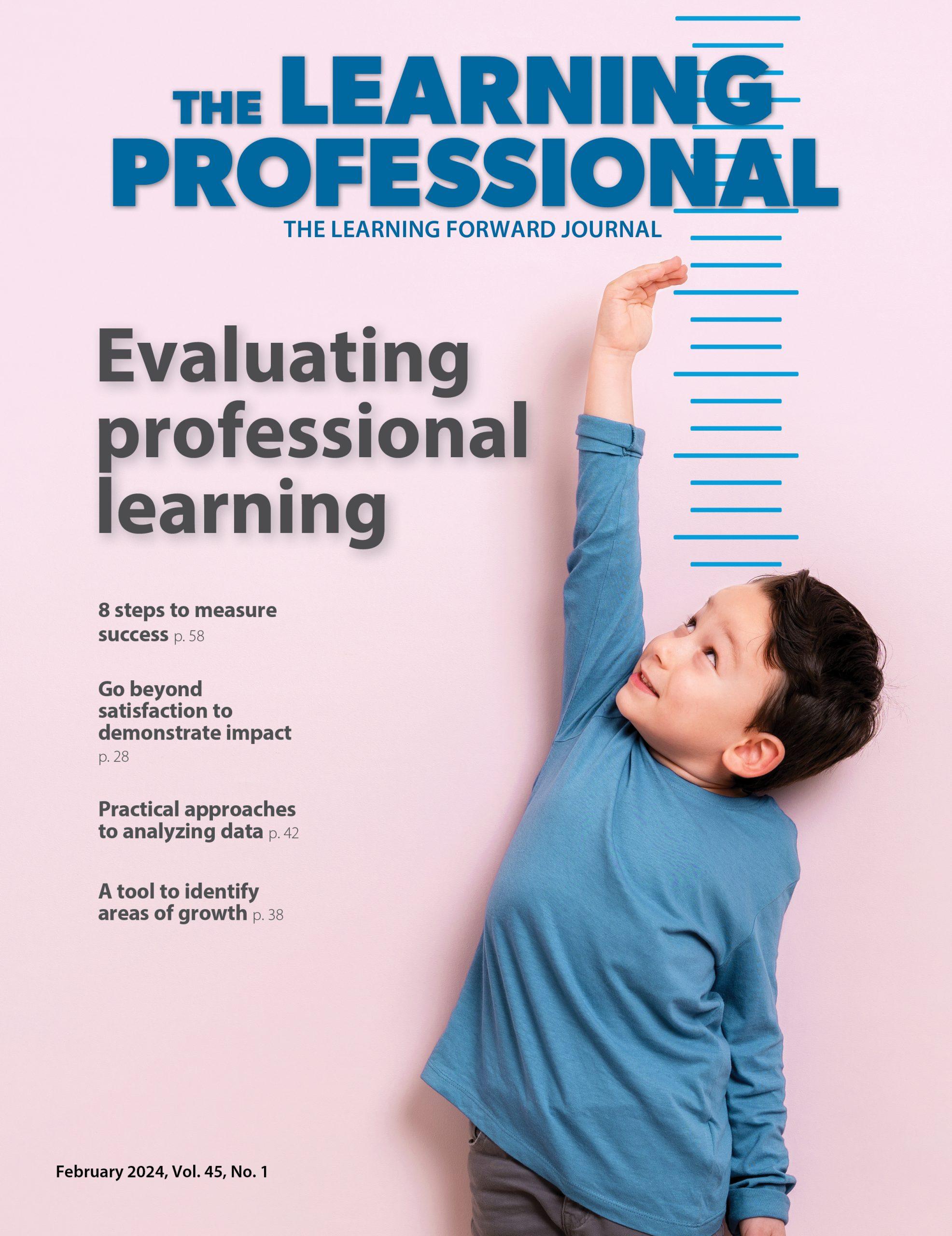RESEARCH
Design principles guide educators in choosing and using curriculum materials
How teachers choose and use educative features in instructional materials
By Elizabeth Foster
February 2018
Vol. 39 No. 1
Read the remaining content with membership access. Join or log in below to continue.
Sed ut perspiciatis unde omnis iste natus error sit voluptatem accusantium doloremque laudantium, totam rem aperiam, eaque ipsa quae ab illo inventore veritatis et quasi architecto beatae vitae dicta sunt explicabo. Nemo enim ipsam voluptatem quia voluptas sit aspernatur aut odit aut fugit, sed quia consequuntur magni dolores eos qui ratione voluptatem sequi nesciunt. Neque porro quisquam est, qui dolorem ipsum quia dolor sit amet, consectetur, adipisci velit, sed quia non numquam eius modi tempora incidunt ut labore et dolore magnam aliquam quaerat voluptatem.
WHAT THIS MEANS FOR PRACTITIONERS
This study clarifies how curriculum use moves from what is written and intended to what is enacted. This process is clearly happening in varying ways, making the presence of aligned and relevant professional learning especially critical.
The researchers suggest that educative features embedded in curriculum can support teacher learning as well as student learning. Although this study touches only briefly on professional learning, there are implications for educators, coaches, principals, and professional learning designers when selecting and engaging with curricular materials.
The suggestions and principles for materials developers seem especially relevant to designers and leaders of professional learning, such as the suggestion that designers emphasize the rationale for shifts in practice, or the idea that multiple explanations and examples be employed in helping teachers understand their own practice, content knowledge, and use of materials with a range of students.
This study is based on the acknowledgement that teachers adapt curricular materials as they use them. For that adaptation to further improve teaching practice and student outcomes, professional learning must incorporate and align to the existing materials and must assess how teachers are currently using them and to what effect.
The authors also note an opportunity here: “Educative curriculum materials have potential to provide sustained, scalable, job-embedded, discipline-specific professional learning opportunities that teachers need” (p. 295). The science-specific design principles point to the helpfulness of very specific guidelines and content markers in clarifying how a teacher’s use of educative features improves practice.
Mapping this study to Learning Forward’s Standards for Professional Learning (Learning Forward, 2011), two of the standards in particular stand out: Learning Designs and Outcomes.
The Learning Designs standard provides an entry point to thinking about implementation of the study’s design principles. The findings and design principles also align with important design elements of effective professional learning: differentiation, alignment, meaning making, and grounded in teacher practice. The design principles developed through this research provide important look-fors for educators, coaches, and leaders of professional learning.
This study offers a better understanding of the Outcomes standard because it shines a light on the process by which teachers engage with their content and how they work with materials to help students achieve their goals. It follows, too, that teachers who are able to incorporate the suggestions and strategies the educative features provide expand their options for reaching and supporting students.
Given the findings that educators regularly and consistently adapt instructional materials and respond to prompts and suggestions in educative features, this is an opportunity for a connection with professional learning efforts.
Of particular interest is the finding that different teachers respond to different prompts and suggestions in the educative materials. Professional learning that is ongoing and embedded encourages teachers to not only select the guidance that is most effective in their context but also develop an understanding of the tools that are most useful to them in their own individualized practice.
REFERENCE Learning Forward. (2011). Standards for Professional Learning. Oxford, OH: Author.

Elizabeth Foster is the senior vice president of research and strategy at Learning Forward. She leads the organization’s research efforts for partnerships, programs, and fundraising. Elizabeth co-wrote the Standards for Professional Learning (2022) with Tracy Crow and now facilitates learning sessions about the standards and develops resources that support their use and implementation.
Recent Issues
LEARNING TO PIVOT
August 2024
Sometimes new information and situations call for major change. This issue...
GLOBAL PERSPECTIVES
June 2024
What does professional learning look like around the world? This issue...
WHERE TECHNOLOGY CAN TAKE US
April 2024
Technology is both a topic and a tool for professional learning. This...
EVALUATING PROFESSIONAL LEARNING
February 2024
How do you know your professional learning is working? This issue digs...










